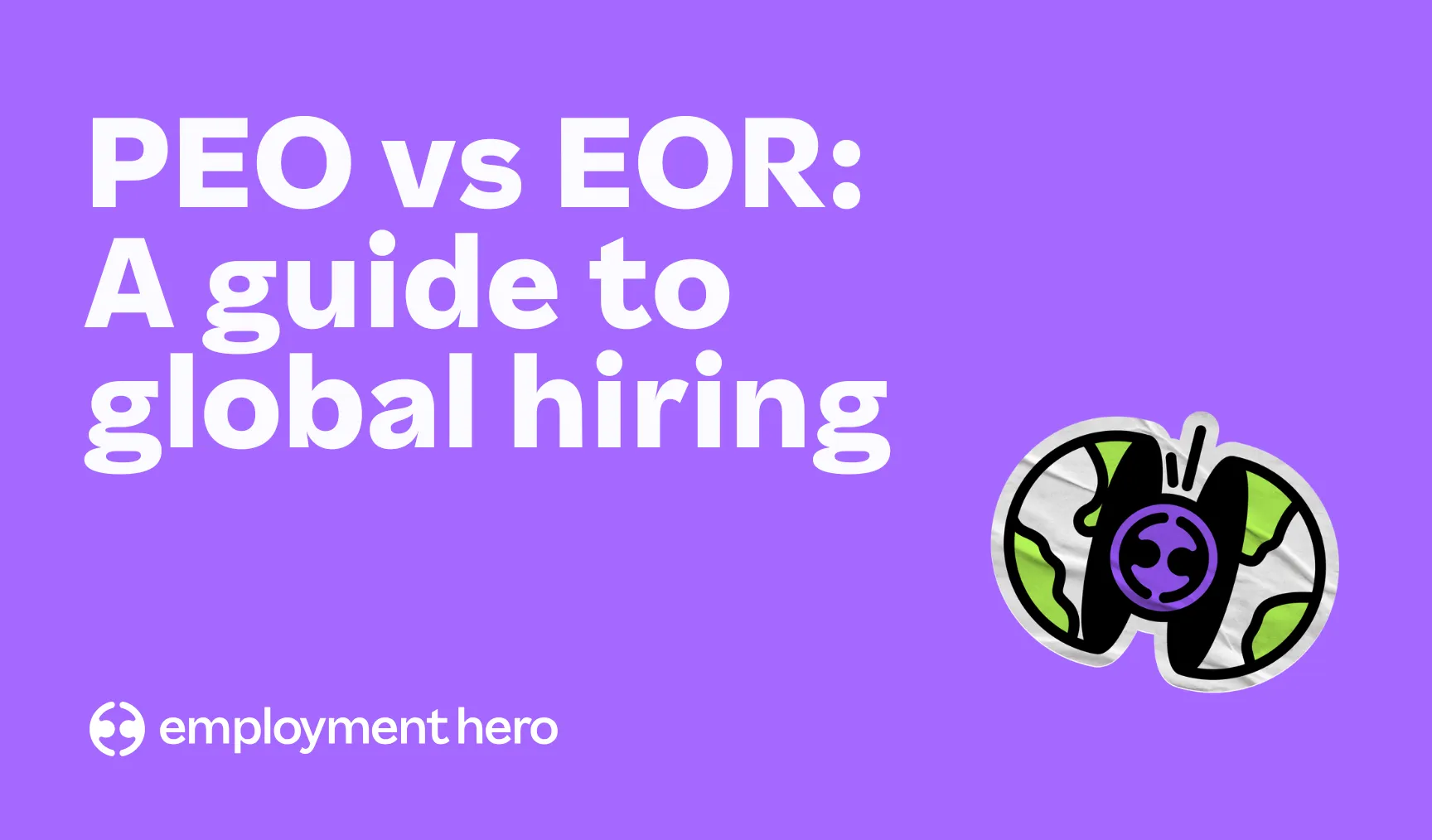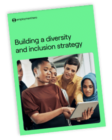Onboarding neurodiverse employees
Neurodiversity is an asset and a competitive advantage. Here’s our guide on onboarding neurodiverse employees to onboard neurodivergent employees well – without the overwhelm.

If we’ve learned anything over the last few years, it’s that a successful team is a diverse team. Naturally, that includes neurodiversity.
Hiring and onboarding can be a tricky process for both the hiring manager and the employee, and it can be especially challenging for a neurodivergent new starter. We know that strategies that support neurodivergent people can also be extremely helpful for neurotypical people, and that can be especially true at work.
Here we’re looking at the onboarding experience specifically to help get you off on the right foot and set you and your employee up for a thriving working relationship.
We encourage you to take a broad and compassionate view of individuals and their needs, and we invite you to avoid making these induction mistakes.
We think that our onboarding process is already neurodiverse-friendly. We’ll break it down further in this article to raise extra awareness, but if you’re already following our onboarding checklists, then you’re already an employment hero.
But if you’re still a bit in the dark about onboarding neurodiverse employees?
Don’t worry, you’re not alone.
We’re all in this together.
What is neurodiversity?
Neurodiversity is a term that reflects the different ways that people think experience and interact with the world around them. It also encompasses the idea that any differences in how people think are not seen as deficits.
Another way to think about it is that neurodivergent brains are structured and operate in a different way than what is considered ‘typical’.
Once upon a time, there might have been a “right” way to think, learn and behave.
Now, we are beginning to recognise and appreciate that there are infinite ways to think and be human – there is not any one ‘right’ way and ‘other’ ways are wrong.
To use the right terminology, an individual cannot be neurodiverse. A group of different people would be considered neurodiverse, whereas a person would be considered neurodivergent – because their thinking diverges from the “norm”.
(Whatever “norm” means. That’s a whole other blog post.)
The opposite of neurodiverse is homogeneous – where everybody or everything is the same. And that doesn’t sound so appealing, does it?
We agree it’s far better to celebrate the differences.

How common is neurodivergence at work?
In the UK, it’s estimated that around 20% of the population are neurodivergent. For employers, it’s important to recognise and understand that neurological differences are to be respected as they may in fact be protected characteristics.
The Equality Act 2010 protects many neurodivergent conditions by affording individuals protection against disability discrimination for issues that are often considered ‘hidden disabilities’.
The challenges and benefits of neurodiversity
Neurodiversity can bring huge benefits to a team – not to mention it creates a significant competitive edge.
When each person can bring their unique experience, perspective and skills to a workplace, the whole team will benefit from diverse approaches to problem-solving, creativity, innovation and ideas.
This is considered an inclusive approach, and research by Deloitte found that companies with inclusive cultures were six times more likely to be innovative and agile.
However, neurodivergence brings its own set of challenges. People with neurodivergent conditions such as autism, ADHD, dyslexia, and even Tourette’s, dyspraxia, synesthesia, dyscalculia, Down syndrome and epilepsy are more at risk of suffering from mental illnesses, poor wellbeing and social isolation.
These conditions have had negative stigmas attached to them for a long time, and people often learn to ‘mask’ to hide their symptoms. This in itself causes significant stress.
Other challenges can include difficulty in concentrating, and problems with executive functions like time management, working memory, planning, and organisation. Maintaining a schedule and prioritisation can also be difficult for people with neurodivergent conditions.
Understanding the challenges that neurodivergent people face and why they occur can help managers put in appropriate support systems which can go a long way to creating inclusive workplaces.
Many neurodivergent people are sensitive to stimuli such as noise and light, which can be especially challenging in open-plan offices. Having quiet areas, break-out zones and flexible break policies can be an easy win, as can offering flexible or remote working.
Ultimately, neurodiversity is about recognising individual needs and preferences.
Managers need to understand this and also have training to be able to accommodate and meet those needs. Often small adjustments, like allowing headphones or providing additional equipment like colour filters can make a lot of difference. And very often, these adjustments benefit everyone.

Thankfully, we’re starting to truly appreciate and recognise the value of neurodiversity, and employers are doing more to support their neurodivergent employees. Rather than target any individual or condition, the goal is to create a neurodiversity-inclusive workplace by valuing and supporting all individuals.
But you need to get the neurodivergent people through the door first, and staying in their roles.
So, let’s look at how onboarding can be fine-tuned to support and embrace neurodiversity.
Fine-tuning your onboarding process
Use virtual onboarding to reduce paperwork overwhelm
Paperless onboarding can help you focus on what matters most – getting your new hire settled in and happy. And first impressions matter – they set the tone for the new starter’s work experience.
From easily keeping track of files to managing admin to keeping the induction process running smoothly, virtual onboarding reduces the overwhelm on both the new employee and the hiring managers. Even if you don’t use a cloud HR platform yet, here’s a handy remote onboarding checklist to keep you organised throughout the induction process. You’re welcome!).
Onboarding neurodiverse employees successfully is simple, , check out how we do it here at Employment Hero.
Set your employees up for success
Before a new employee’s first day, make sure that their workspace and IT equipment have been set up, or sent to them if they are working remotely. If they have requested specific tools or technology that makes their role more accessible, ensure that this is available in advance of their start date.
Provide clear information prior to the first day
Make sure you email the essential information your employee will need to them ahead of their first day. Create an induction schedule setting out what their first couple of days will look like, and schedule the meetings in their calendar. Knowing what to expect takes a lot of the stress out of any person’s first day.
Set up 1:1 introduction calls with team members and colleagues
When onboarding neurodiverse employees, setting up short get-to-know-you calls with key team members is a great way to introduce the team without overloading your new hire in their first few days. Short, informal meetings allow your new employee to get to know the team in a manageable way at a manageable pace, helping them settle in more comfortably without getting overwhelmed.
A buddy system
Pairing your new employee with a buddy can also help your new hire acclimatise to the company and their role in a safe and supportive way. It also gives them a friendly person to talk to outside of a management structure, which makes the whole onboarding experience that much more accessible and inclusive.
It’s also good for the buddy as it likely gives them variety in their role, and it reduces the pressure on the line manager to be a single point of contact.
Frequent check-ins
Scheduling frequent check-ins, particularly when an employee first starts in a role, can be great for both the manager and the employee to find the rhythm of their working relationship. It provides an opportunity to provide support, identify training needs, and identify and resolve issues as they arise – long before they start to fester.
But any check-ins and reviews need to be meaningful. Managers must listen to their employees with a view to understanding, rather than listening simply to respond or give further directions. Listening to and understanding the employee’s experience is empowering, and it’s also critical to cultivating a psychologically safe workplace.
Our favourite way to check in regularly? One-on-one (1:1) meetings. These confidential weekly or fortnightly meetings between managers and their direct reports are a great way to catch up and have meaningful conversations.
Letting go of outdated work practices
We all have ideas about how a job should be done, what needs to happen in a workday or even what an office should look like. And when it comes to a role, there are often preconceived ideas and expectations about how that role should be performed.
But managers need to also think about asking how people work. This might require adjusting to when people are most productive – morning, afternoon, or evening. It also might require adjusting workloads and work schedules to accommodate different interests, skills and talents.
Managers might also need to rethink their meeting strategy. Is attendance obligatory? Could meetings be virtual? Could they be asynchronous rather than requiring employees to attend?
In this era of remote working, there is a wide variety of tools available to make every aspect of work more accessible. Make smart use of tools to engage and involve your team transparently, and allow them to decide which tools best serve them to do their job to the best of their ability.
It’s a good idea to be open-minded about how the job gets done and let your employees have autonomy over how they perform their roles best.
This is why we are big fans of the remote first way of working. It allows all employees, regardless of how they think, to access and consume our training and tools in whatever format works best for them, at a time that suits them and their working styles.
How Employment Hero can help
 Employment Hero is the world’s first employment OS that can take the stress out of onboarding. We know that championing neurodiversity is a win-win for everyone.
Employment Hero is the world’s first employment OS that can take the stress out of onboarding. We know that championing neurodiversity is a win-win for everyone.
At the end of the (first) day, (excuse us while we laugh at our own puns) it comes down to respecting your employees as the unique individuals that they are.
If you have a truly inclusive workplace, everybody’s neurological needs are likely to be met. And in the instances where they aren’t, inclusive workplaces are safe spaces where employees feel comfortable talking about and asking for what they need to succeed.
This means having robust policies and practices around diversity, inclusion and belonging so people can bring their whole self to work.
We do this by recognising that individuals have individual needs and then creating a supportive environment where everyone can thrive.
At Employment Hero, we are proud that we exist to make employment easier and more rewarding for everyone. And we mean it. Our Employment Hero onboarding software is designed with exactly this in mind – getting your new hires set up for success in their roles easily, efficiently and according to their individual needs.
Want more? Check out our masterclass on creating an effective virtual onboarding experience or request a demo today
Related Resources
-
 Read more: PEO vs. EOR: A guide to global hiring
Read more: PEO vs. EOR: A guide to global hiringPEO vs. EOR: A guide to global hiring
Contents Expanding your business into new markets is a powerful growth strategy. But hiring talent globally introduces a maze of…
-
 Read more: How to build a global team without a local entity
Read more: How to build a global team without a local entityHow to build a global team without a local entity
Learn how to streamline your hiring and expand your UK business globally with an Employer of Record (EOR) without the…
-
 Read more: HRIS vs HRMS: What’s the Difference and Which Is Right for Your Business?
Read more: HRIS vs HRMS: What’s the Difference and Which Is Right for Your Business?HRIS vs HRMS: What’s the Difference and Which Is Right for Your Business?
Confused between HRIS and HRMS? Discover their key differences, features, and which is best for your business. Read our comparison…





















